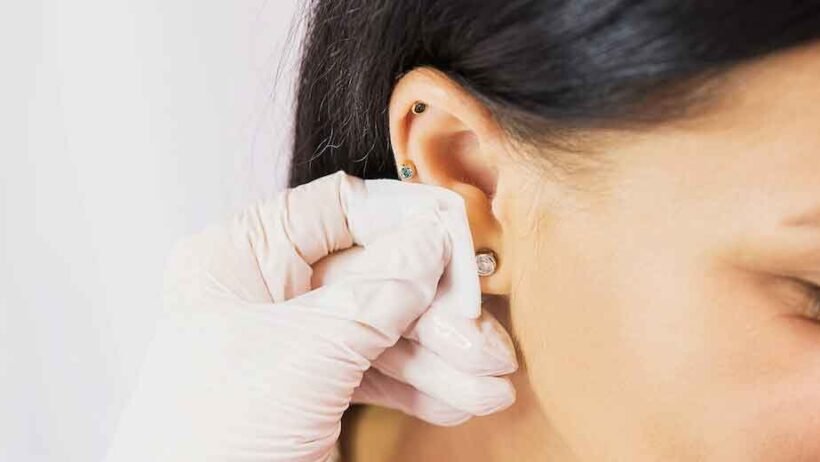Getting a body piercing is more than just a fashion statement—it’s a medical procedure that involves breaking the skin, which means hygiene and safety must always come first. Professional piercers are trained to maintain sterile environments, utilizing medical-grade equipment and adhering to strict sanitation procedures to prevent infections and complications. Every part of the process, from the sterilization of tools to the disposal of used needles, is carefully controlled. Understanding how these measures work can help you feel confident during your next piercing appointment and appreciate the commitment professionals make to protect every client’s health and comfort.
Maintaining Safety Through Strict Hygiene Protocols
- Sterile Studios and Clean Work Environments
A professional piercing studio operates under the same hygiene principles as a medical clinic. The space is regularly cleaned and disinfected to ensure no contaminants are present. Every surface, from the countertops to the piercing chairs, is wiped down with approved disinfectants between clients. Piercers wear disposable gloves and change them multiple times throughout a single session to prevent cross-contamination. Each step of the piercing process is done with precision and cleanliness in mind. Studios also use single-use needles, which are opened from sterile packaging right before the procedure begins. Once used, these needles are immediately discarded in medical-grade sharps containers to eliminate the risk of reuse. A genuinely professional studio focuses on maintaining this sterile workflow from start to finish, creating a space where both safety and comfort coexist naturally.
- Sterilization of Tools and Equipment
Beyond maintaining a clean studio, professional piercers use advanced sterilization technology to ensure their tools are completely germ-free. One of the most common devices used is an autoclave—a high-pressure steam sterilizer that kills all bacteria, viruses, and spores. Jewelry, clamps, and other reusable tools are placed inside sterile pouches before being run through the autoclave, ensuring they remain uncontaminated until used. Piercers maintain logs of autoclave cycles to verify that proper sterilization temperatures and durations are consistently achieved. This record-keeping is part of professional accountability. Studios such as Platinum Ink Austin have set a strong example in the industry by demonstrating meticulous hygiene care, showing clients that safety is not negotiable. Piercers also use ultrasonic cleaners before autoclaving to remove any microscopic debris from tools, ensuring a double layer of protection. This combination of cleaning methods maintains an environment where the risk of infection is virtually eliminated.
- Single-Use Items and Their Importance
The rise of disposable equipment in the piercing industry has significantly enhanced client safety. Items like needles, ink caps, gloves, and gauze are all single-use and discarded immediately after each procedure. This eliminates the risk of cross-contamination between clients, a primary concern in less-controlled environments. Professional piercers understand that using disposable equipment for each piercing is both an ethical and a practical responsibility. Even marking pens used to draw placement dots are often single-use to prevent bacteria from transferring between clients. The entire process demonstrates a deep understanding of health standards and responsibility. When clients notice how carefully each tool is opened, used, and disposed of, it reinforces the trust between them and the piercer—trust that is earned through visible adherence to safety procedures.
- Jewelry Quality and Sterility Standards
Equally important as the tools are the jewelry pieces used for fresh piercings. Reputable studios use only implant-grade materials such as titanium, surgical steel, or niobium. These metals minimize allergic reactions, allowing for smooth healing. Before insertion, every piece of jewelry is sterilized in sealed packaging and only opened in the client’s presence. Piercers ensure the jewelry’s size and shape fit the anatomy properly, as improper sizing can cause unnecessary friction or healing problems. Attention to these details isn’t about luxury—it’s about biology and long-term safety. The jewelry’s surface finish also matters since rough or low-quality surfaces can irritate healing tissue. A clean, smooth, and properly sterilized piece of jewelry supports quick recovery and reduces the likelihood of infection, showcasing the piercer’s professionalism and care for client health.
- Procedural Precision and Client Safety Measures
During the piercing process, precision and control are essential, as they go hand in hand with hygiene. Piercers start by cleaning the client’s skin using antiseptic solutions to remove any oils, dirt, or bacteria. They mark the piercing location carefully and verify the placement with the client before proceeding. Once confirmed, they use sterile gloves and instruments throughout the process, maintaining the sterile field’s integrity. Clients are often surprised at how methodical each movement is—the piercer avoids touching anything non-sterile after putting on gloves. If an adjustment is needed, they will change gloves again rather than risk contamination. Even the most minor details, such as the use of sterile drapes or sealed packages, reinforce that every decision made during the procedure prioritizes safety above all else. This mindful approach transforms what could be an anxious experience into one that feels controlled, precise, and trustworthy.
- Education, Certification, and Continuous Improvement
Maintaining safety isn’t only about equipment—it’s also about knowledge. Professional piercers undergo formal training in anatomy, bloodborne pathogen prevention, and sterilization procedures. Many complete certification programs recognized by industry associations to ensure they stay current with evolving health standards. Continuing education allows them to refine their techniques, adopt new sterilization technologies, and maintain compliance with local health regulations. Studios often require piercers to refresh their certifications periodically, ensuring that their safety knowledge remains up-to-date. This commitment to learning reflects not only professionalism but also respect for the trust clients place in them. When clients see certificates on the wall or observe strict procedural discipline, they gain reassurance that the piercer’s focus extends beyond aesthetics—it centers on protecting human health and ensuring a safe, hygienic experience every time.








